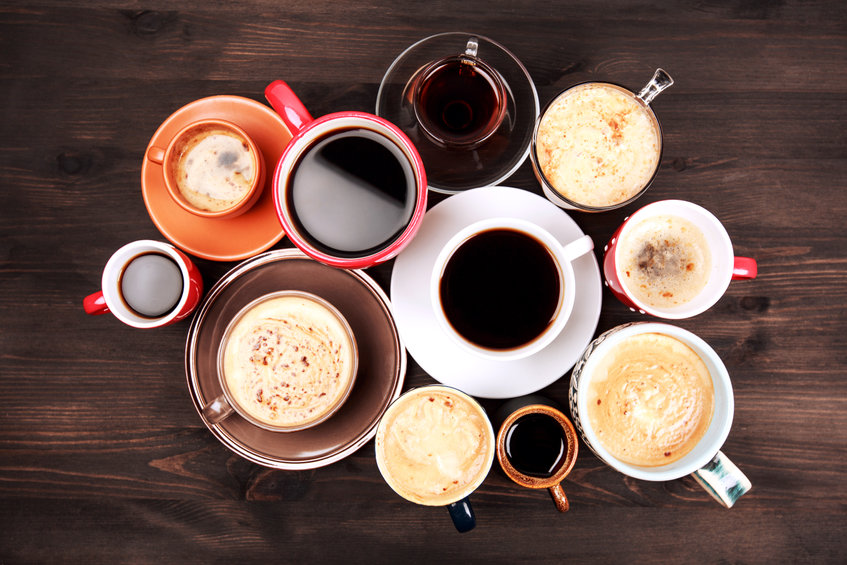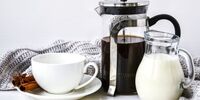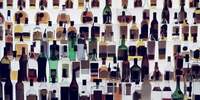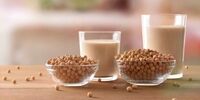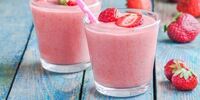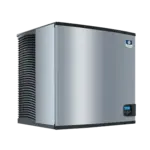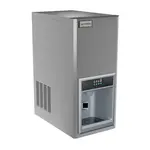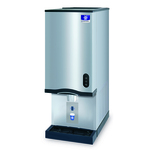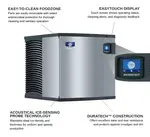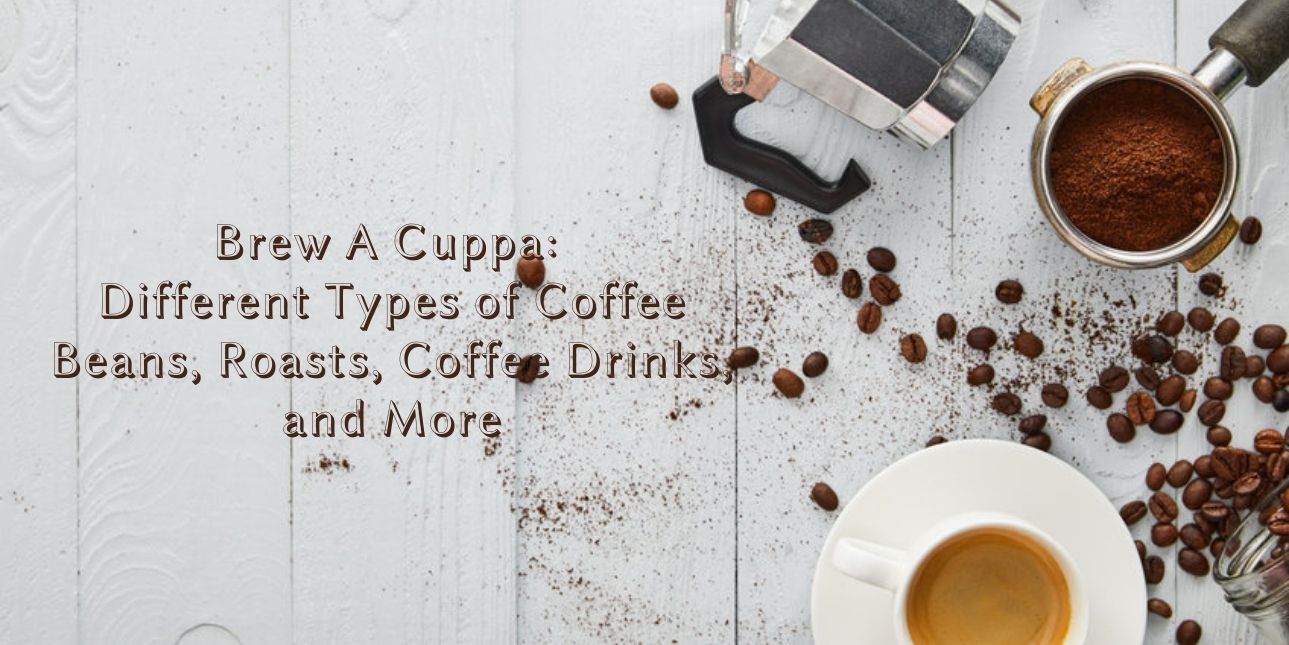
The love for coffee is universal! For many, coffee is like oxygen, giving them energy and firepower to last through the day. Each sip of coffee can be determined by the type of coffee beans, roast, and brewing method. Most coffee lovers and cafe owners are unaware of the differences between an Arabica and Robusta, latte vs. cappuccino, and light blond roast vs. dark roast.
In this article, we discuss the different types of coffee beans available, different types of coffee roasts that you can prepare, the various types of brewing methods, and the types of coffee drinks popular across the world.
Different Types of Coffee Beans
Arabica: Arabica is a widely known coffee bean. Arabica originated from the highlands of Ethiopia hundreds of years ago. Arabica bean takes care and consideration to grow. High-quality Arabica has a complex and smooth taste. More than 60% of coffee production worldwide is Arabica. The popularity is because of the lack of bitterness in the taste.
Robusta: The second most widely known coffee bean after Arabica is Robusta. Robusta is immune to disease, which makes it a hearty crop. Robusta originated from sub-Saharan Africa, which continues to be its primary source. Additionally, the bean is grown in Indonesia and parts of south-east Asia. Robusta is an economical choice for most food service establishments and places that serve instant coffee. Most instant coffee mixes constitute 100% Robusta. The high-caffeine content of Robusta makes it more bitter than Arabica. In Vietnam, Robusta is blended with various coffee beans and blends.
Liberica: Liberica is mainly cultivated in Malaysia. Liberica is a favorite in the Philippines. The taste of Liberica is inconsistent; it can taste woody, floral, or smokey. Liberica is not popular in Europe and the Americas.
Different Types of Coffee Roasts
Many are unclear about the various types of coffee roast levels. Here we list down the most common coffee roast levels popular across the world:
Light Roast: Light roast contains high levels of caffeine as it is denser and contains more minerals. It is blonde, toasty, and has high levels of acidity.
Medium Roast: The color of a medium roast is nut brown, and it has a non-oily surface. Medium roast has a balanced texture, flavor, aroma, and acidity levels.
Dark Roast: Dark roast is a mahogany-colored roast, full-bodied and heavy. Dark roast has low-caffeine content and is spicier than other roasts.
Extra-dark Roast: Extra-dark roast has a smoky and burnt flavor. An extra-dark roast is bitter and contains the lowest caffeine levels of all roasts.
Generally, light roast beans are denser than dark roast beans. Denser beans contain more caffeine than less dense beans.
Types of Coffee Brewing Methods
Drip: Drip is the most common process for making coffee traditionally. Medium grounds are mixed in the brew basket and processed in an automatic machine for making classic black coffee.
Pour Over: Pour-over brewing method is a significantly refined process of coffee brewing. With the pour-over method, you can achieve a stronger brew. In the pour-over method, boiling water is poured slowly on the grounds in a filter basket, and the final blend drips into a cup.
Espresso: Espresso is popular globally. In this method, pressurized boiling hot water passes through dark roasted coffee beans through a filter. The force of the hot water creates a concentrated hot shot of espresso.
Cold Brew: In cold brew, coarsely ground coffee mostly steeps at regular room temperature for extended periods. Cold-brew has low acidity levels and high caffeine levels.
What Are The Different Types of Coffee Drinks?
Here, we list all types of coffee drinks that are served worldwide:
Black Coffee And Espresso: Black coffee and espresso are made by steeping coffee beans in hot water. Espresso is made from extra-dark finely ground beans passed through highly pressurized coffee machines that can deliver single shots of concentrated coffee. On the other hand, black coffee is made by dripping hot water over ground coffee beans. Black coffee has low to medium concentrations of caffeine.
Latte And Cappuccino: Latte and cappuccino are both creamy and smooth. The primary difference between the two is their proportions. A latte is light on foam and has a high dose of steamed milk. All three layers of steamed milk, foamed milk, and a shot of espresso are evenly distributed in a cappuccino.
Americano: An Americano is a simple alternative to plain black drip coffee. A standard Americano cup consists of a hot espresso blended with hot water.
Cortado: Cortado has equal parts of steamed milk and espresso. In Cortado, milk balances the bitterness of the espresso.
Red Eye: Red Eye is the perfect drink if you want to indulge your patrons with coffee and more coffee. An espresso shot blended with a full cup of black coffee to create Red Eye. Red Eye is the perfect drink to cure a hangover.
Mocha: Mocha is the perfect blend of hot cocoa and cappuccino. Mocha provides a cocoa kick with the creaminess of steamed milk.
Macchiato: A macchiato is made by combining one part of espresso with three parts foam. Macchiato is not as foamy as cappuccino and not as strong as a shot of espresso.
Flat White: Flat white is made with twin shots of espresso blended with steamed milk. Flat whites come with a rich flavor like a cappuccino but without the excess foam.
Irish Coffee: Irish coffee is a coffee cocktail that has become popular globally. Irish coffee is made with sugar, cream, coffee, and a shot of Irish whiskey.
Iced Coffee: Blend ice with brewed black coffee, and voila! You have iced coffee. Depending on your patrons ' taste palettes, you can add sugar, cream, milk, or honey. If you wish to serve iced coffee in your restaurant and cafe, you will need high-quality ice makers.
Cold Brew: A cold brew is a combination of chilled water steeped with coffee grounds. Depending on your brewing process, the process takes around 3 hours to 48 hours. Long brew hours translate to strong brewed coffee. Once done, you can blend the cold brew with milk, cream, sugar, or ice. You can also serve a hot cuppa with a cold brew. The brew provides a nuanced and strong taste of coffee that is distinct from any other brewing process.
Iced Espresso: Like iced coffee, iced espresso is made by pouring espresso shots over ice. You can also add sugar, honey, and any other flavor. Alternatively, you can turn any hot espresso into an iced espresso by storing it in a freezer.
Nitro-cold Brew: The nitro-cold brewing process is the newest kid on the block. All trendy cafes and restaurants are serving nitro-cold brew as it is popular with the millennials. Freshly prepared cold-brewed coffee is charged with nitrogen. Some high-end cafes and pubs are dispensing nitro-cold brew from dedicated nitro taps.
Additionally, there are various popular coffee recipes across the world. Dalgona coffee is a trendy South Korean drink that has a frothy texture. Masala coffee from India is made by blending coffee, milk, sugar, and Indian spices. Turkish coffee is made by blending milk, sugar, and grounds in a saucepan. Thai coffee is rich in cardamom and condensed milk. If you wish to serve various types of coffee in your foodservice establishment, you will need high-quality coffee shop equipment depending on your volume and needs.

